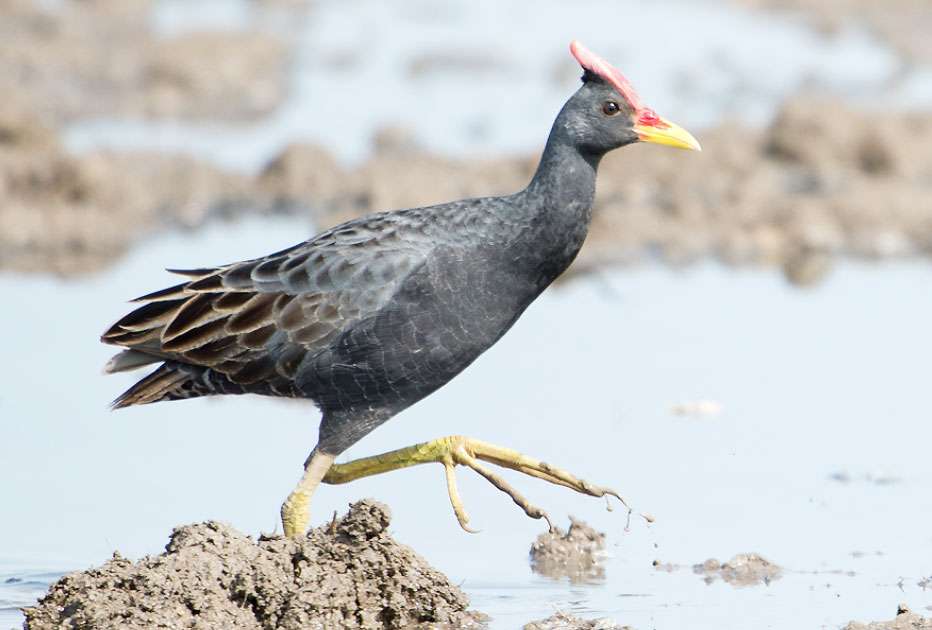The watercock (Gallicrex cinerea) is a passerine bird which belongs to the family Rallidae under order Passeriformes of Class Aves. They are found in swamps across south Asia from India and Sri Lanka to south China, Japan and Indonesia. They roam in places where there is a lot of water. They are found in paddy fields and sugarcane fields under irrigation system.
Systematic Position
- Phylum – Chordata
- Subphylum – Vertebrata
- Class – Aves
- Order – Passeriformes
- Family – Rallidae
- Genus – Gallicrex
- Species – Gallicrexcinerea
They gather food in the morning and evening. They are seen collecting food during raining or cloudy days. The watercock wags its tail while walking. They feed on tree tops, crop seeds, wild and cultivated paddy, larvae of aquatic insects, etc. They call out with a croaking sound. The loud, gulping calls are mostly heard at dawn and dusk.
Morphological Structure
The male watercock grows up to 18 inches in length with weight of weigh 476–650 gm (1.049–1.433 lb) while the female watercock can grow up to 13 inches in length with weight of 298–434 gm. The upper part of the body is dark brown and fringed. The lower part of the body is reddish, brown in color. Wavy black spots can be seen here. Horned blades exist on the head. The bill is yellow and the legs are green. The downy chicks are black, as with all rails. Bright red crests of male birds are observed during reproduction. At this time their eyes and legs are red.
Watercock (Gallicrex cinerea)-image credit-wikipedia.org
Reproduction
Watercock participates in the reproductive process between June and September. It builds a bowl-like nest mostly in dry locations by leaning on something with the leaves and tube grass of tuberous plants. They make their home in swampy areas in paddy or sugarcane fields. The female lays 7-8 white or pink eggs at home. Then the baby hatches out of the egg.

